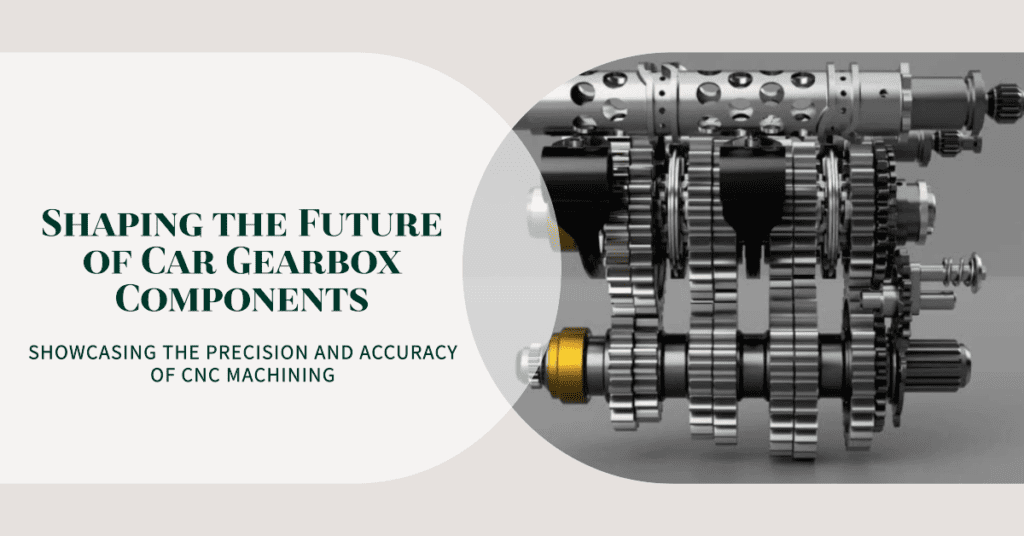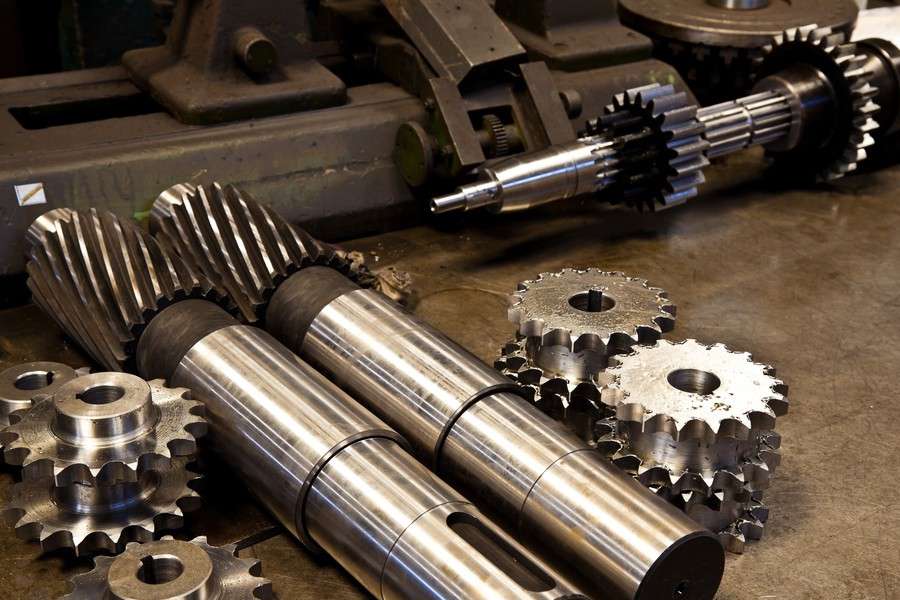
In the constantly evolving landscape of automotive manufacturing, the role of CNC machining in driving precision, efficiency, and innovation cannot be overstated. Particularly in the production of gearbox components, the impact of this advanced technology is significantly transforming how the automotive industry operates. Given the complexity and precision required for these components, CNC machining’s high-precision, high-volume production capabilities make it an ideal solution.
This article explores the multifaceted role of CNC machining in manufacturing gearbox components, highlighting its benefits, challenges, and future developments.
The Dynamics of CNC Machining
CNC machining, or Computer Numerical Control machining, involves the use of computers to control machine tools with high precision. This technology’s strength lies in its ability to ensure high levels of accuracy and consistency, making it invaluable in manufacturing complex components like those found in a car gearbox.
Key Aspects of CNC Machining:
- High Precision and Accuracy: CNC machining ensures all parts are produced to exact specifications, thus improving the functioning of the car gearbox.
- Consistency: With CNC machining, every single part produced is identical to the last, providing uniformity across the production line.
- Flexibility: The ability to quickly switch between different jobs by changing the software program allows manufacturers to meet diverse production needs.
Manufacturing Gearbox Components Using CNC Machining
The advent of Computer Numerical Control (CNC) machining has greatly revolutionized the manufacturing sector, notably the creation of gearbox components. Given their critical role in a vehicle’s functioning, gearbox parts need to be manufactured with a high degree of precision and quality, both of which CNC machining ensures.
The process of producing gearbox components with CNC machining can be broken down into four key stages:
1. Design and Programming: This is the first and arguably most crucial step in the process. During this stage, the gearbox component is designed using Computer-Aided Design (CAD) software. The CAD program allows engineers to create a 3D model of the part, which provides a visual representation of what the final product should look like. Once the design is finalized, it is translated into a CNC program. This program uses G-code, a programming language that CNC machines can interpret. The G-code provides precise instructions to the CNC machine on how to manufacture the part to exact specifications.
2. Material Selection: Selecting the right material is crucial to the performance and longevity of the gearbox component. The material used will depend on the specific part being produced and its function within the gearbox. For instance, gears and shafts are often made from robust materials like steel or aluminum to withstand the high torque and heat generated during operation. On the other hand, certain components like seals may be made from specific types of plastic that provide the required durability and heat resistance.
3. Machining Process: Once the design is programmed and the material selected, the actual machining process begins. The CNC machine uses the instructions from the G-code to guide its tools in creating the part. Because the machine operates under computer control, it can achieve a level of precision and consistency that would be difficult, if not impossible, to attain manually.
4. Quality Assurance: After the machining process, rigorous checks are conducted on the finished components to ensure they meet the required industry standards. This could involve visual inspections, measurements, or even testing the part under conditions similar to those it will face in operation.
Here is a tabulated breakdown of the process:
| Stages | Description |
|---|---|
| Design and Programming | The component is designed using CAD software and converted into a CNC program. |
| Material Selection | The appropriate material is chosen based on the functional requirements of the component. |
| Machining Process | The CNC machine creates the part using the program’s instructions. |
| Quality Assurance | Rigorous checks are performed on the finished component to ensure adherence to industry standards. |
Key Gearbox Components Manufactured Using CNC Machining
Gearboxes play a pivotal role in the operation of a vehicle, and each of their components is critical to their function. CNC machining, with its unparalleled precision and consistency, is ideally suited for manufacturing these parts. Here are some of the key gearbox components that are typically manufactured using CNC machining:
1. Gears: Gears are perhaps the most integral components of a gearbox, tasked with transmitting power from the engine to the wheels. Given their pivotal role, it is crucial that they are manufactured with utmost precision. CNC machining can produce gears of various shapes and sizes, all with high accuracy. The precision of CNC machining ensures smooth engagement between gears, resulting in a smoother and quieter ride.

2. Shafts: Shafts in a gearbox serve to transmit power from the engine through the gears. The shafts must be made to exact specifications to ensure they fit properly within the gearbox and function efficiently. CNC machining’s precision ensures that each shaft is perfectly dimensioned for its specific role in the gearbox.
3. Bearings: Bearings play a crucial role in reducing friction within the gearbox and ensuring smooth operation of the gears and shafts. Any inconsistency in their size or shape could lead to increased friction, inefficient operation, and even damage to other components. CNC machining ensures these parts are produced with high accuracy, ensuring a long and efficient life for the gearbox.
Related Resource: CNC Grooving: The Game-Changer in Gears and Sprockets Manufacturing
The Advantages of CNC Machining in Gearbox Component Production
CNC machining brings a host of benefits to the production process of gearbox components. These advantages not only improve the quality of the final product but also streamline the manufacturing process itself.
1. High Precision and Accuracy
The level of precision and accuracy that CNC machining offers is unparalleled. Given that the entire process is computer-controlled, each component is created exactly as per the design specifications. In gearbox manufacturing, where even the slightest deviation can lead to performance issues, such precision is invaluable.
2. Scalability
Another significant advantage of CNC machining is its scalability. Once the design and programming stage is completed, the same CNC program can be used to manufacture hundreds or even thousands of identical parts. This makes it an ideal choice for mass production, allowing manufacturers to keep up with the high demand for gearbox components.
3. Flexibility
CNC machining can create complex geometries and designs that would be challenging to achieve with conventional machining methods. This flexibility allows for the creation of a wide variety of gearbox components, each tailored to perform a specific function within the gearbox.
4. Efficiency
CNC machines can operate round-the-clock with minimal human intervention, which greatly enhances production efficiency. They also minimize waste by using materials more efficiently, which can lead to significant cost savings in the long run.
5. Consistency
Each part produced with CNC machining is identical to the last, ensuring a high level of consistency across all components. This consistency is crucial in gearbox manufacturing, where all parts must fit together seamlessly to ensure optimal performance.
Challenges and Solutions in CNC Machining of Gearbox Components
While CNC machining brings numerous advantages to the production of gearbox components, it also presents certain challenges. However, with the right solutions, these challenges can be overcome.
| Challenge | Description | Solution |
|---|---|---|
| High Initial Investment | CNC machines and related software can be costly, posing a significant initial investment. | This can be offset by the high efficiency and low waste production these machines offer in the long run. |
| Skilled Labor Requirement | Operating CNC machines and creating CNC programs require skilled labor. | Regular training and development programs can help keep the workforce up-to-date with the latest CNC technologies. |
| Machine Maintenance | Regular maintenance is crucial to keep CNC machines operating optimally. | A well-planned maintenance schedule can help prevent unexpected machine downtimes. |
Despite these challenges, the numerous advantages offered by CNC machining in the production of gearbox components make it an indispensable part of the automotive manufacturing industry.
The Role of Prolean’s CNC Machining Services in Gearbox Component Manufacturing
Prolean’s CNC machining services have carved out a niche in the domain of gearbox component manufacturing. By embracing cutting-edge technologies, Prolean ensures quality, precision, and efficiency in every component it produces.
| Key Advantage | Description |
|---|---|
| High Precision and Accuracy | By employing advanced CNC machines, Prolean ensures every component is manufactured to the exact design specifications. This high level of precision and accuracy guarantees optimal performance of the gearbox components. |
| Scalability | Prolean’s CNC machining services are highly scalable. Once the CNC program is set up, the same specifications can be used to manufacture hundreds or even thousands of identical components, allowing Prolean to handle high-volume orders efficiently. |
| Quality Assurance | Prolean maintains strict quality control procedures. After the machining process, each component undergoes rigorous checks to ensure they adhere to the highest industry standards. |
| Use of Advanced Technologies | Prolean stays ahead of the curve by incorporating advanced technologies such as AI and IoT in its CNC machining processes. This integration enhances efficiency and ensures the consistent production of high-quality components. |
| Skilled Workforce | Prolean’s team of highly skilled and trained professionals ensures the optimal operation of CNC machines, contributing to the production of top-quality gearbox components. |
Conclusion
CNC machining plays a critical role in manufacturing gearbox components for the automotive industry. Despite its challenges, the benefits it offers in terms of precision, consistency, and scalability make it a valuable asset in the manufacturing process. Looking forward, the integration of AI and IoT technologies promises to further enhance CNC machining, ushering in a new era of innovation in the production of gearbox components.
Leading this revolution is Prolean, with its advanced CNC machining services. By harnessing the power of this cutting-edge technology, Prolean is helping to shape the future of automotive manufacturing, ensuring precision, quality, and efficiency in every gearbox component they produce.
FAQs
1. What is the role of CNC machining in manufacturing gearbox components?
CNC machining plays a pivotal role in manufacturing gearbox components. With its high precision and consistency, it ensures the production of high-quality components that meet exact specifications.
2. What are the benefits of CNC machining in gearbox component production?
CNC machining offers several benefits in gearbox component production, including high precision and consistency, scalability for high-volume production, and versatility in manufacturing various components.
3. How do Prolean’s CNC machining services contribute to gearbox component manufacturing?
Prolean’s CNC machining services lead the way in producing high-quality gearbox components. Their advanced CNC machines and highly trained staff ensure precision, quality, and consistency in every component they produce.
4. What are the future advancements expected in CNC machining for gearbox component manufacturing?
Future advancements in CNC machining include the integration of AI for automation and IoT devices for real-time monitoring and adjustments, both of which can streamline the process and increase efficiency.




0 Comments